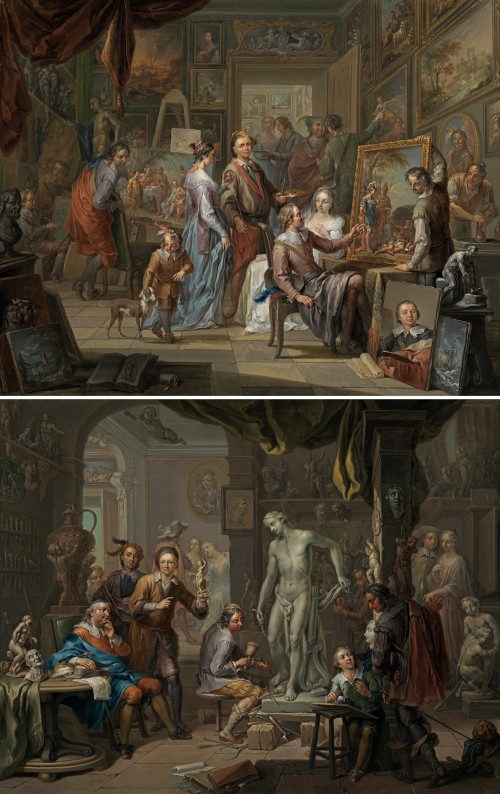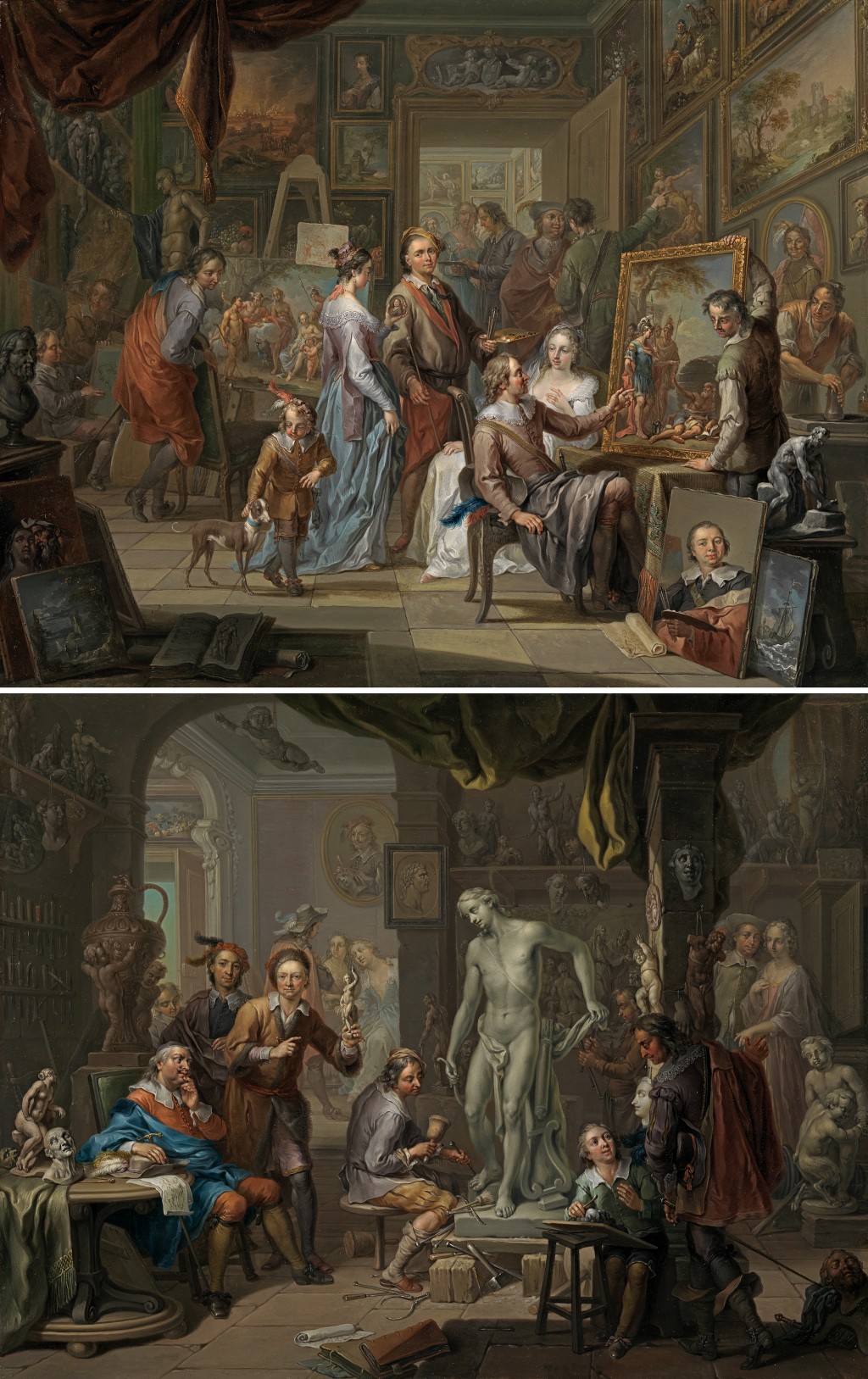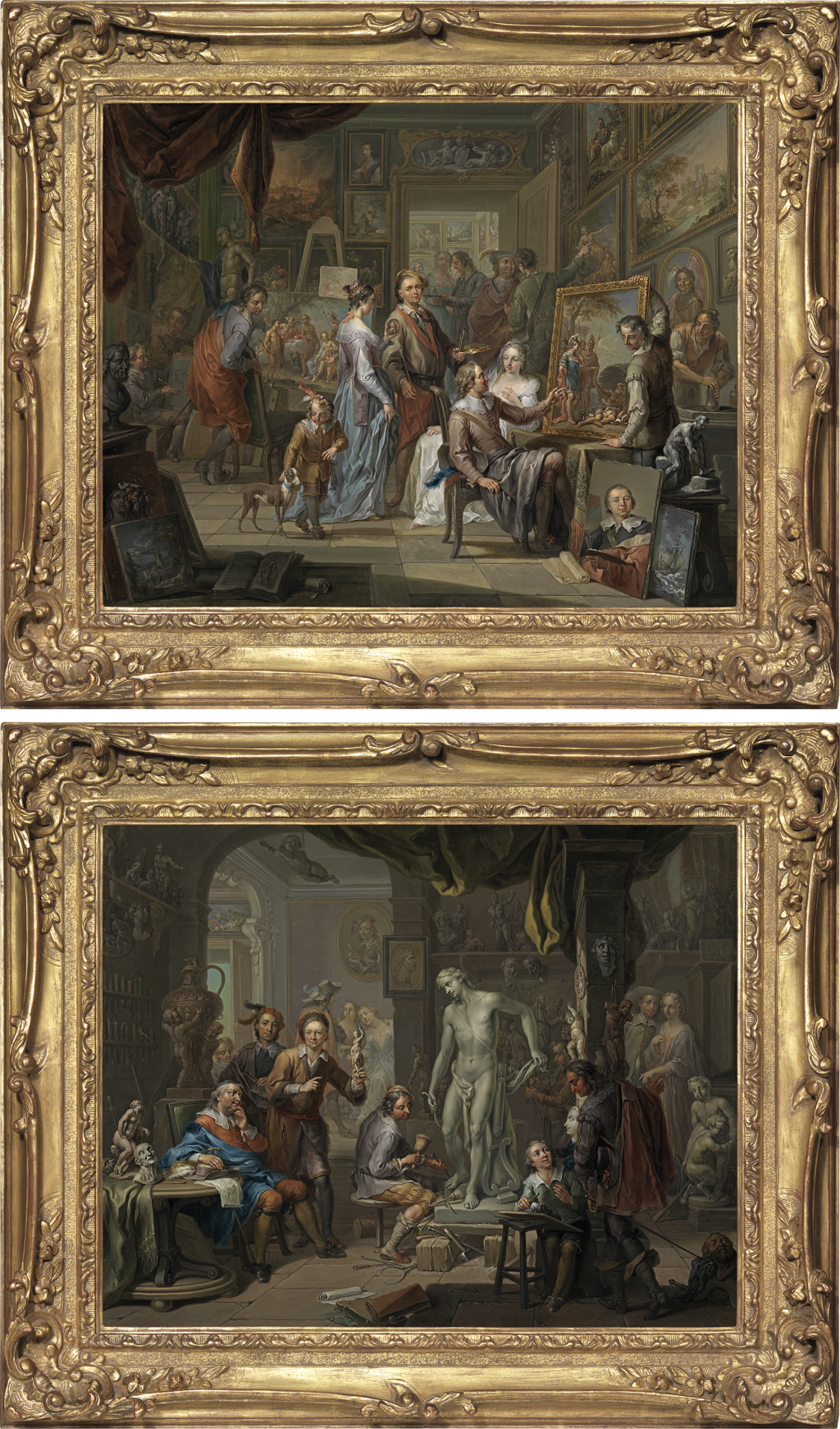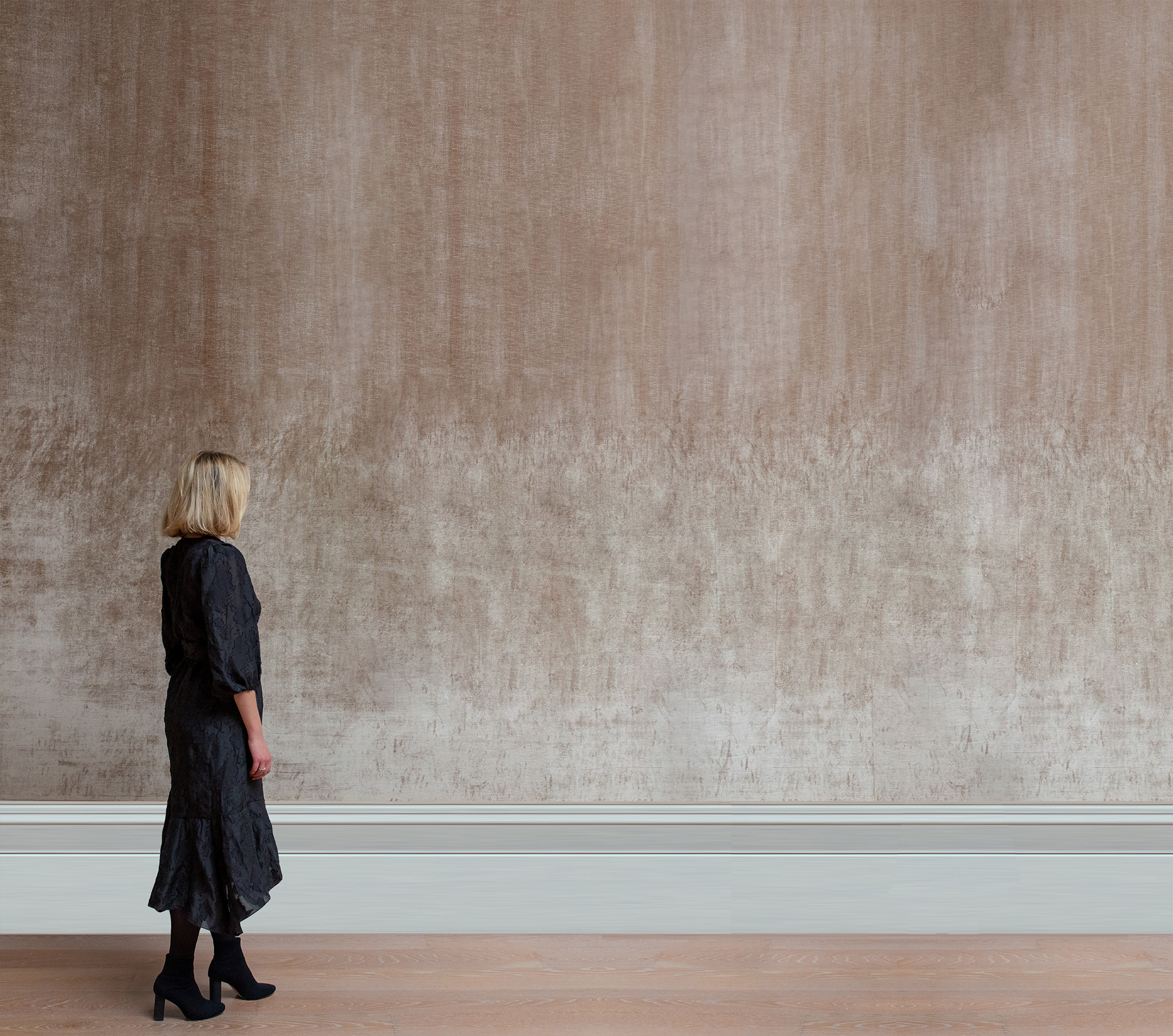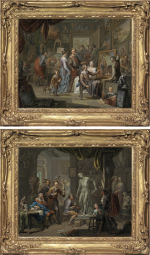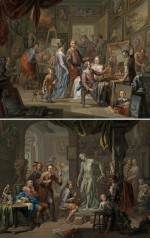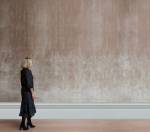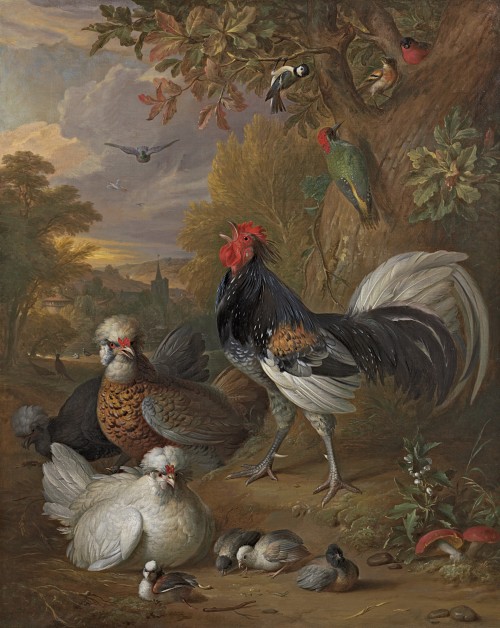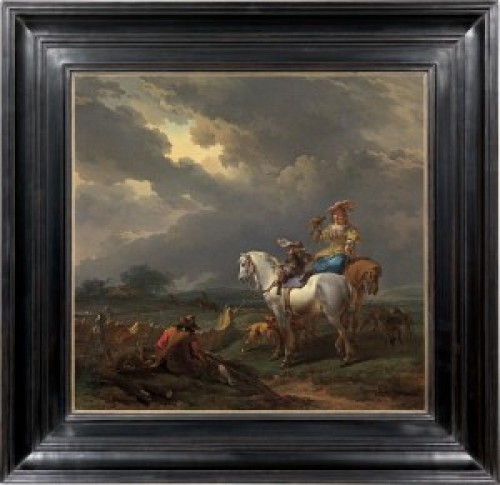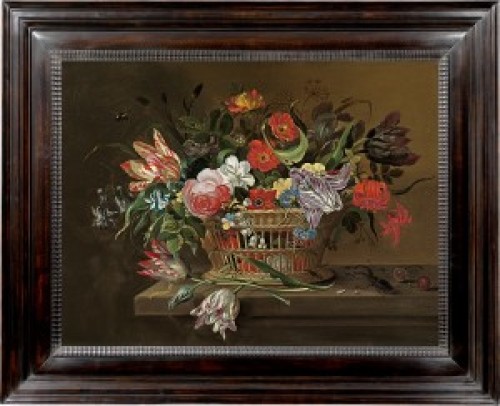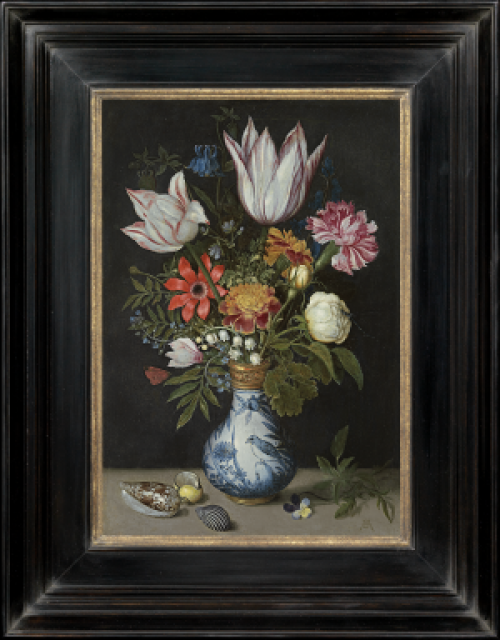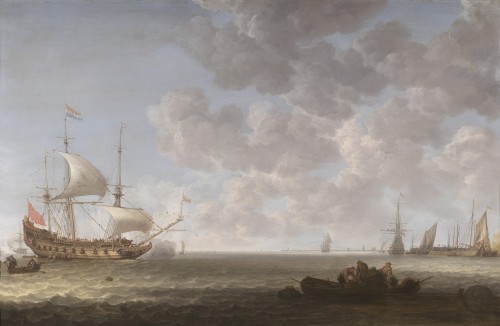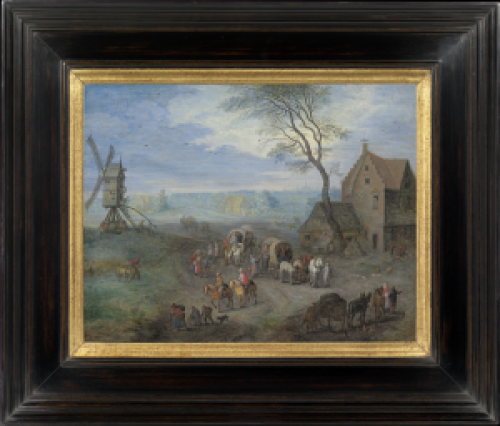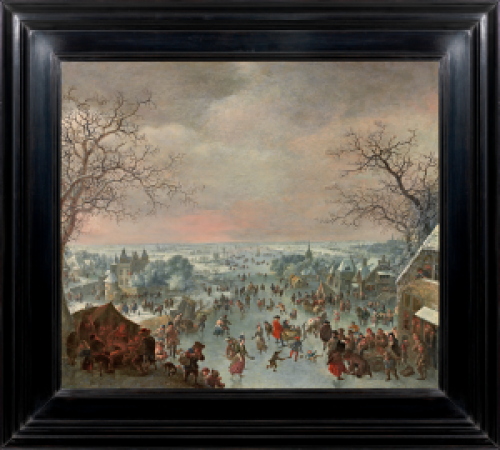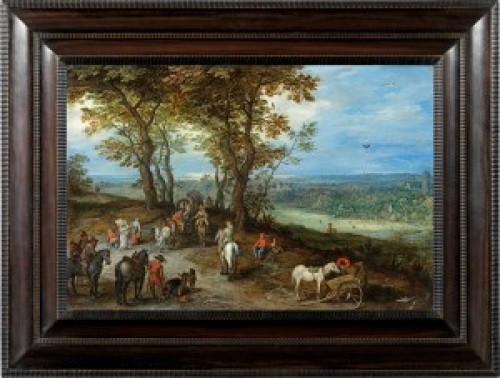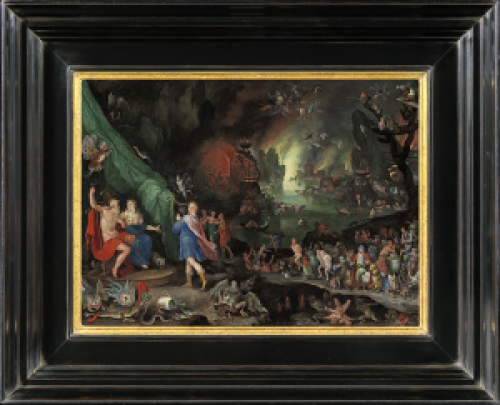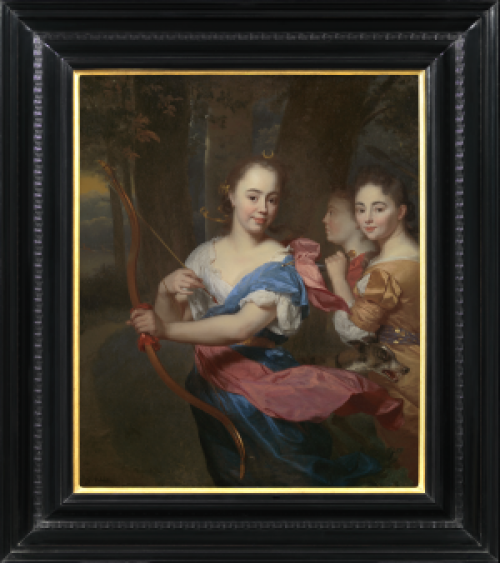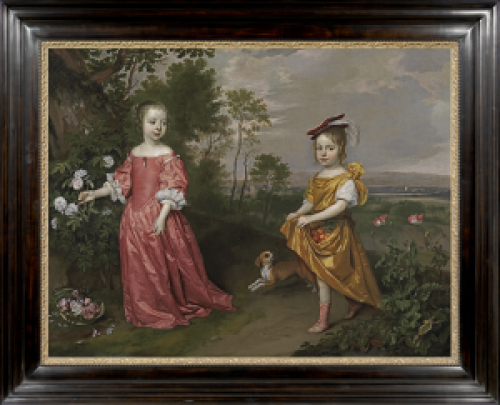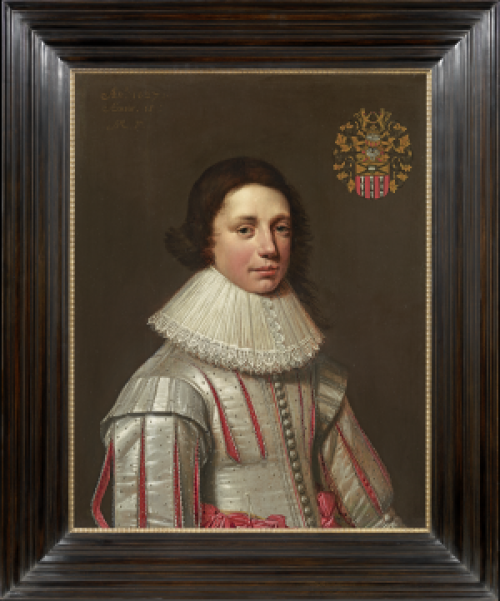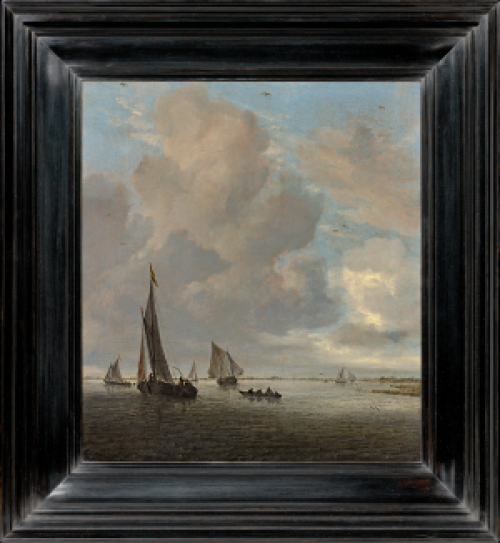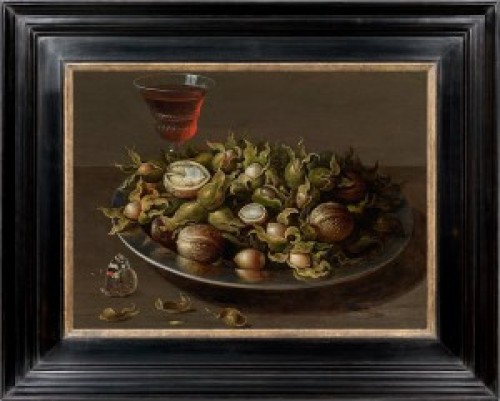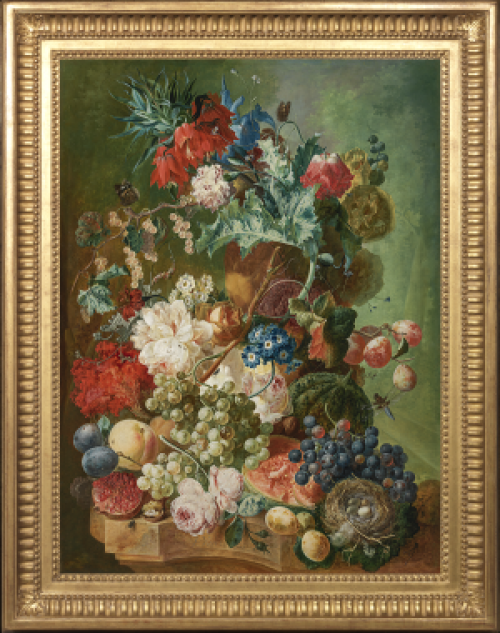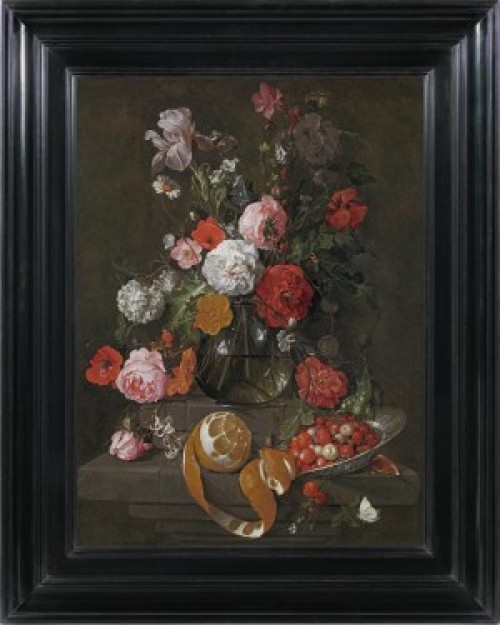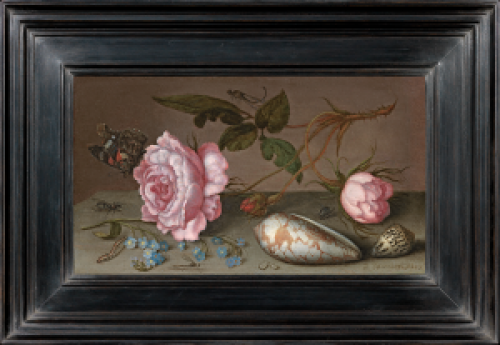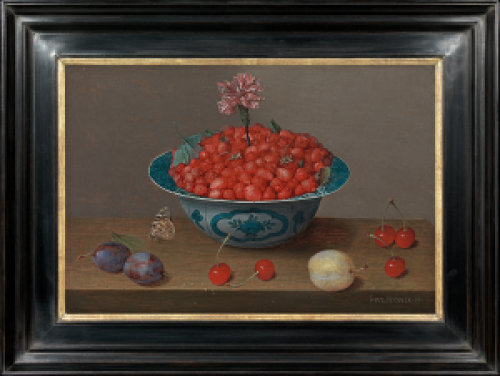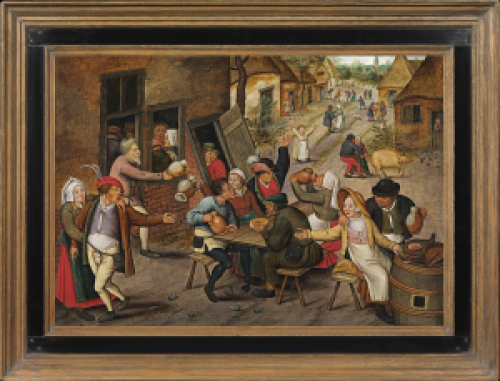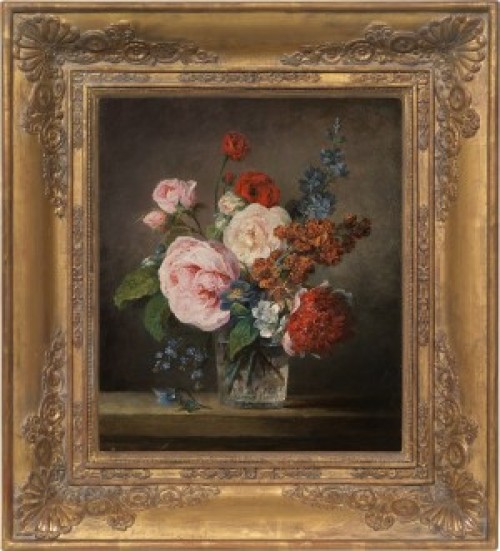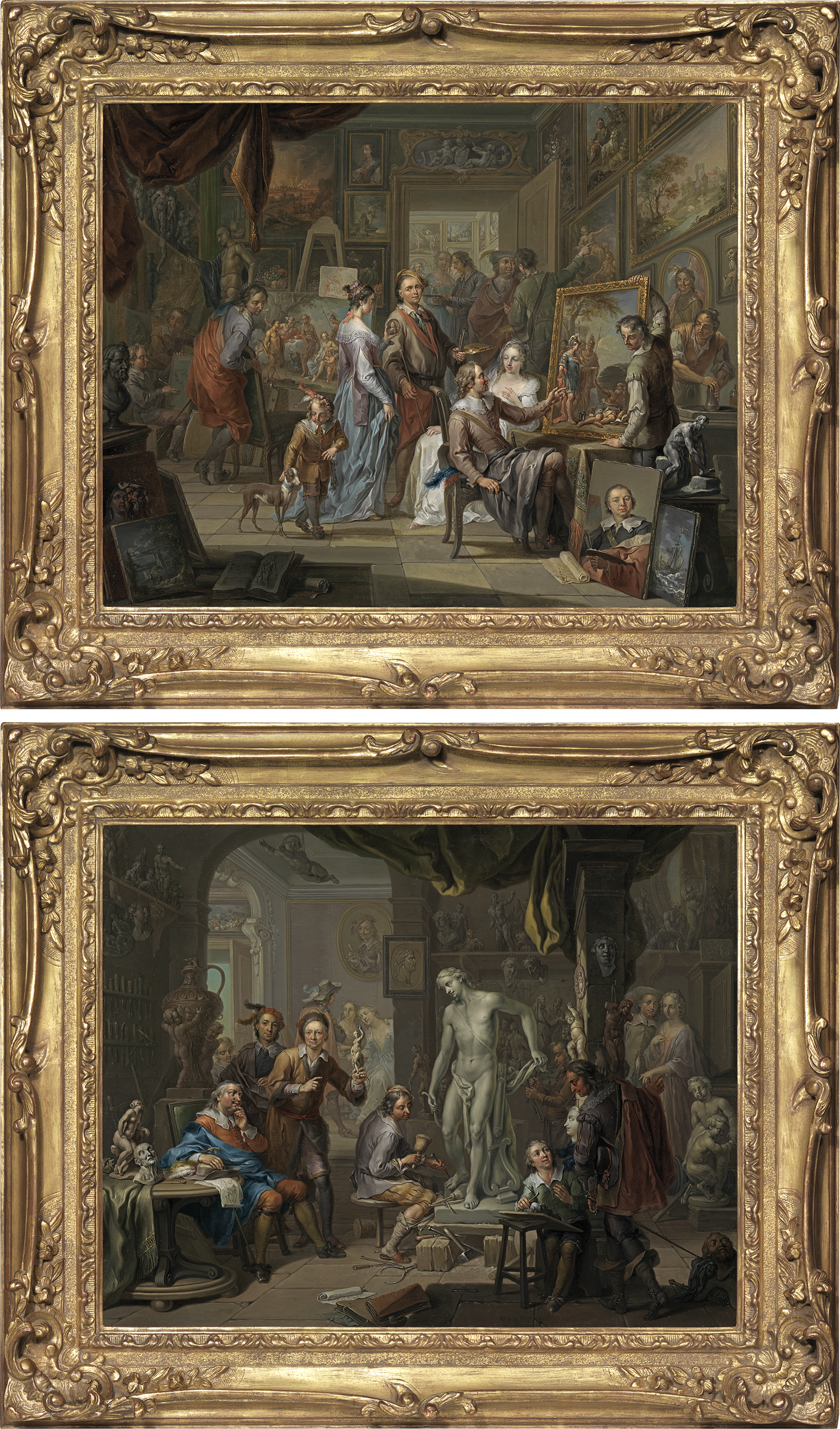FRANZ CHRISTOPH JANNECK
Gratz Graz 1703 - 1761 Vienna
Ref: BX 162
The painter’s studio; The sculptor’s studio
A pair, the former signed and dated lower right: F.C. Janneck fe.1748
Oil on copper: 16 x 21 in / 40.6 x 53.3 cm
Frame size: 22 x 26 in / 55.9 x 66 cm
Provenance:
Private collection, France, until the early twenty-first century;
by descent in a private collection, Europe
This pair of paintings on copper is a masterpiece of the celebrated late baroque Viennese painter Franz Christoph Janneck. With the shimmering sophistication and playfulness typical of the artist, the city and the era, they depict the idealized studios of a painter and a sculptor.
The painter’s studio is set within a baroque palace bejewelled with paintings from floor to ceiling. Connoisseurs, dressed in theatrical versions of seventeenth century dress, admire themes from Classical history and mythology; a lady holds a delicate portrait miniature. Every genre of painting is represented: history, portraiture, marine painting, a battle scene, landscapes, religious works, as well as prints and drawings. The painter stands proudly at the centre of the composition, with his mahlstick, brushes and palette dabbed with bright colours. Dressed in a loose but elegant gown and a cap, he is far from belonging to the artisan class where artists had been confined in earlier centuries. A studio assistant holds up a gold-framed work for a gentleman to admire; another grinds colours. In the background, a servant brings wine for the visitors while a well-dressed woman, perhaps the painter’s wife, looks on. The most prominent work in the right foreground is the portrait of a painter presented with a baroque swagger.
By 1748, when this painting was made, Janneck was well established in the capital of the Austro-Hungarian empire and a member of the Vienna Academy of Fine Arts, serving as its Rector from 1752 to 1758. He specialized in exquisitely finished cabinet works, often on copper, as epitomized by this pair, but also produced landscapes, religious subjects, portraits and miniatures. This painter’s studio, with its array of different genres, trumpets his versatility; the artist at the centre of it is a self-portrait.
The theme is continued with The sculptor’s studio, where an assistant chisels away at a lifesize sculpture of the god Apollo, protector of the Muses and thus of all the arts. The pose recalls aspects of the famed Apollo Belvedere. The sculptor holds up a small-scale full-length of a triumphant, naked Venus. As with The painter’s studio, the full repertoire of the sculptor is presented: Classical and mythological themes, portrait busts and bas-reliefs, terracottas, plaster modelli and works in stone, as well as preparatory drawings. In the shadows is a beautiful still life of an array of sculptor’s chisels and tools. The message of both paintings is not only that the painter and sculptor are supreme exponents of their respective professions, but that their knowledge is built upon an affinity with Classical art. Born in Graz, southern Austria, and with a mother from Lugano, Janneck was as steeped in Italianate art as its northern equivalents.
Janneck was fond of making pairs of paintings and made another pair of a painter’s and a sculptor’s studio for the art historian and aesthetician Christian Ludwig von Hagedorn (1712-1780), which Hagedorn described as ‘exquisite’. Since Classical times, arguments had raged as to which art was the superior, painting or sculpture. Leonardo da Vinci wrote a celebrated treaty on the matter, in which he came down on the side of painting as requiring the greater illusionistic imagination and which ‘carries all its parts within itself’. Janneck no doubt agreed with him: he cheekily places the portrait of the artist in the very foreground and lights The painter’s studio strongly, while The sculptor’s studio is more crepuscular and the oval portrait of the sculptor is placed in the background.
The painter’s studio and its companion The sculptor’s studio stand in a tradition of cabinet paintings that go back to the seventeenth century Netherlands and to the fijnschilder works of Gerrit Dou (1613-1675) and Frans van Mieris (1635-1681). Their virtuosity was meant to be admired in an intimate setting, perhaps holding the works in the hand. The tradition of fijnschilder painting on copper, a support allowing exceptionally fine detail, lasted longer and with more vigour in Middle Europe than further west. Janneck manages to combine detail with a baroque sense of space and play of light, making this pair of paintings seem much grander than the comparatively small compass of their copper plates. Janneck chooses colours – silver and silvery blues, lilac and ochre, across which the light ripples and caresses.
Janneck was also drawing on the seventeenth century Netherlandish tradition of the depiction of connoisseurs in studios or palaces admiring art. This theme was brought to a pitch of sophistication by David Teniers (1610-1690), Court painter to the Habsburg rulers of the Spanish Netherlands, in paintings such as Archduke Leopold Wilhelm in his gallery in Brussels (Kunsthistoriches Museum, Vienna). Teniers’s work was widely accessible in royal and aristocratic collections in Vienna. The figures in Janneck’s Painter’s studio and Sculptor’s studio are in playful versions of seventeenth century costume, their silks, lace-edged collars and gleaming pearl necklaces recalling Teniers’s seventeenth century grandees and gracefully alluding to centuries of Habsburg art and patronage.
Susan Morris
FRANZ CHRISTOPH JANNECK
Graz 1703 - 1761 Vienna
Franz Christoph Janneck was born at Graz in 1703, the son of a painter of Croatian origin, Martin Jänneg or Jänickh (d.1709) and his wife Anna, who came from Lugano. His brother Matthias (b.1707) also became a painter. Franz Janneck studied with the still life painter Matthias Vangus (fl.1710s-20s) in Graz. From 1721 to 1728 he was active in Vienna, where he studied with the Court painter Jacob van Schuppen (1670-1751), Director of the Hofakademie der Maler, Bildhauer und Baukunst. Janneck seems to have spent some time travelling through Austria and southern Germany. He became a pupil of the Hungarian-born landscape painter Josef Orient (1677-1747) in Frankfurt.
In 1736 Janneck settled in Vienna, where he remained for the rest of his life. That year he married Anna Maria Canton, daughter of the painter Franz Canton (1678-1733). Janneck became a member of the Vienna Academy of Fine Arts in 1741, rising to become its Assessor (Rector) from 1752 to 1758, sharing the position with Paul Troger (1698-1762) and Michelangelo Unterberger (1695-1758) during a particularly flourishing era for the institution. Janneck died in Vienna in 1761.
Franz Christoph Janneck was a leading late baroque specialist in genre scenes. He also produced landscapes, religious subjects, portraits and miniatures and provided staffage for Josef Orient’s own landscapes. He was one of the finest Austrian exponents of highly finished cabinet pictures, together with Johann Georg Platzer (1704-1761). These were often executed on copper and show figures in contemporary, historical or mythological costume, continuing the seventeenth century Netherlandish fijnschilder tradition.
Janneck paid particular attention to the decorative settings of his genre scenes. Many of his sumptuous interiors include architectural features derived from the works of Fischer von Erlach (1656-1723) and Johann Lukas von Hildebrandt (1668-1745).
The work of Franz Christoph Janneck is represented in the Belvedere, Vienna; the Musée des Beaux-Arts, Bordeaux; the Brukenthal National Museum, Sibiu; the National Gallery, Prague; the Staatsgalerie im Neuen Schloss, Bayreuth and the Staatliche Kunsthalle, Karlsruhe.

